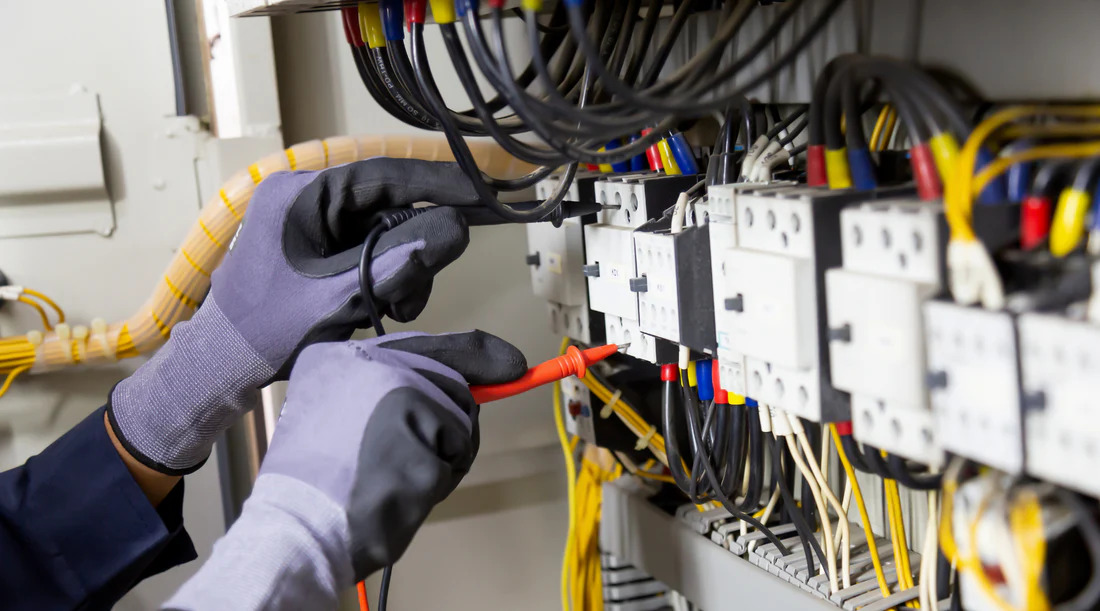What is Voltage its Unit Formula Types Application
You must have heard of the voltage, current & power that is associated with electricity. It is one of the basic fundamental parameter of electricity. The overhead transmission lines that possess very high voltage used to transmit power over long distance to load center (cities, homes & industries).
Any electrical power source such as batteries has its voltage mentioned on its casing such as 12V car batteries or 1.5V batteries used in gadgets. The electrical sockets in our home does provide 120/220 voltage which is supplied from utility poles.
You need to know about the voltage because it is essential for any electrical equipment to be powered by the power source having the required voltage ratings that it’s designed for. Every electrical equipment has its voltage requirement mentioned on its nameplate or its manual.
Equipment designed for 220 volts won’t operate from a 12v supply & equipment designed for 12 volts will get damaged if connected with 220v supply. Apart from that, voltage has types & you must be able to differentiate which one is suitable for a specific device.Electrical ChargeThe sub atomic particles existing in an atom known as proton & electron are given arbitrary names positive charge & negative charge respectively. “The opposite charges attract each other”. In other words, the electron & proton attract each other.
Suppose, two bars made of positive & negative charged particles & a positive test charge is placed on top of the negative bar at point A. The distance between test charge & negative bar is zero. If i let go of the test charge, there will be no movement.
If i move the charge in opposite direction (toward the positive bar) & increase the distance between them, the work done in moving the charge from point A to point B will convert into potential energy that is stored in it. If I let go of it, the test charge will accelerate towards the negative bar.
This analogy explains the voltage where the voltage is the potential energy that corresponds to the distance between test charge & positive bar. In first case, there was no distance between them & the charge does not move which means if there is no voltage, the charge (current) does not flow in a conductor.
While the second case suggests that there is some voltage which forces the charge to move in a specific direction. The voltage is the pressure or force that pushes the current inside a conductor same as the force experienced by the negative charge.
We can also use water analogy for understanding. Suppose, there is a tank of water that has a hole in its bottom so that water can flow out. The level of the water inside the tank represents the voltage & the amount of water flowing out represents current.
If the level of water inside the tank is very low, there will be low pressure exerted on the water flowing out. Therefore the amount of water flowing out in a unit time will be low. If the water level is high, it will exert high pressure, thus amount of water flowing out will increase. The same idea is used in voltage, where the voltage is the pressure that flushes the current in an electrical circuit. Greater the voltage greater will be the current flow though the circuit.
What is Voltage?
In electrical circuit, voltage is the force or pressure that is responsible for pushing the charge in a closed looped conductor. The flowing of charge is called current. The voltage is the electric potential between two points; the greater the voltage the greater will be the current flow through that point. It is denoted by letter V or E (used for representing electromotive force).
Unit of Voltage
The unit of voltage is volt named after Italian physicist Alessandro Volta who invented the first battery (chemical battery to be more precise).
Volt is defined as “the potential difference between two points that allows a current of 1 ampere through it and dissipates 1 watt of power between these points”.
In other words, a “Volt” is the potential difference which moves one joule of energy per coulomb charge between two points.


0 Comments